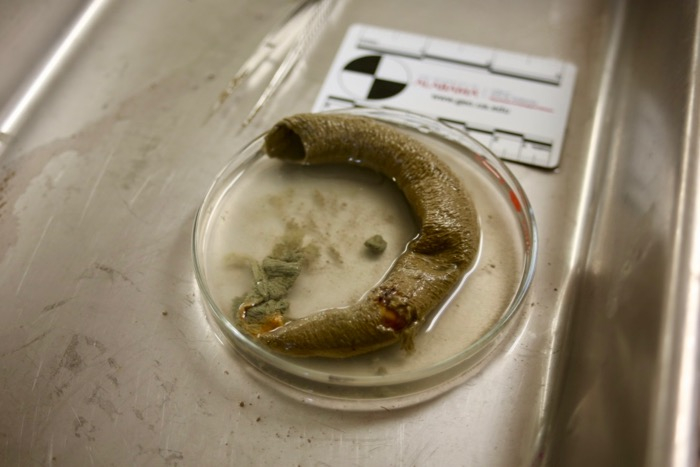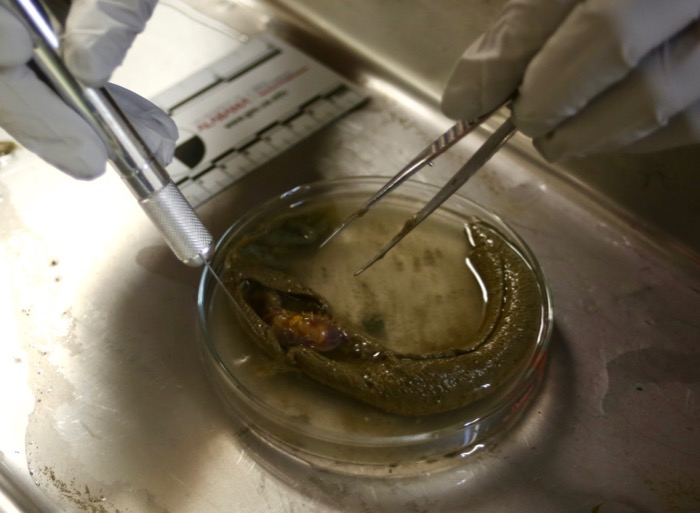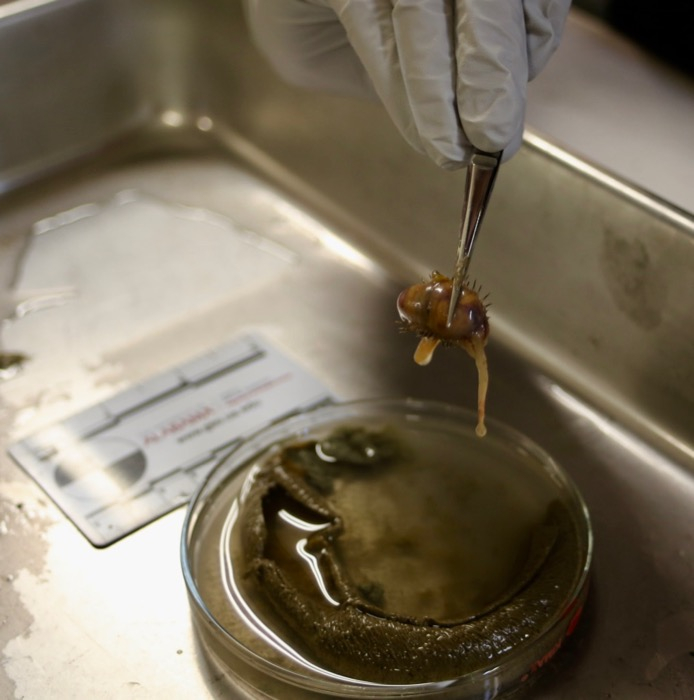What in the World???
We collected what might be our final sediment cores today in an area known as Cranton Bay. I was scooping out a sample from the 0-2 cm layer when I noticed something firm and cylindrical in the mud. Rachel grabbed a pair of tweezers and started to pull, gradually extracting a 4-inch long tube formed from sediment. Through a slight puncture caused by the sharp metal tweezers, we could see that some sort of creature had built itself a burrow and that we had captured it in our core.

Rachel carefully cut open the tunnel and revealed the thing inside it - which I have to admit I was grateful to see was already dead because it looked ugly enough to have attacked and seriously wounded at least three of us before we could manage to subdue it. We saw spikes and, for lack of a more appropriate scientific term, goo.

Although I have never been brave enough to watch the movie "Alien," I imagine this thing appeared similar to the creature that erupts from Sigourney Weaver's stomach.

All sediment processing stopped while a bunch of scientists who know very little about invertebrate biology gathered around the table and tried to figure out what we were looking at.

Although we don't have the skills to identify it down to species (especially not in its partially-wrecked state), we are pretty sure it is some sort of polychaete - also known as a bristle worm. They are in the same class of invertebrates as earthworms and are often found in marine habitats. More than 10,000 species have been described, many of which are significantly better-looking than our monstrous little discovery. They are a pretty fascinating group, and I would recommend googling them to learn more - or at the very least, consult the 2017 offline Wikipedia page for additional information.


Comments